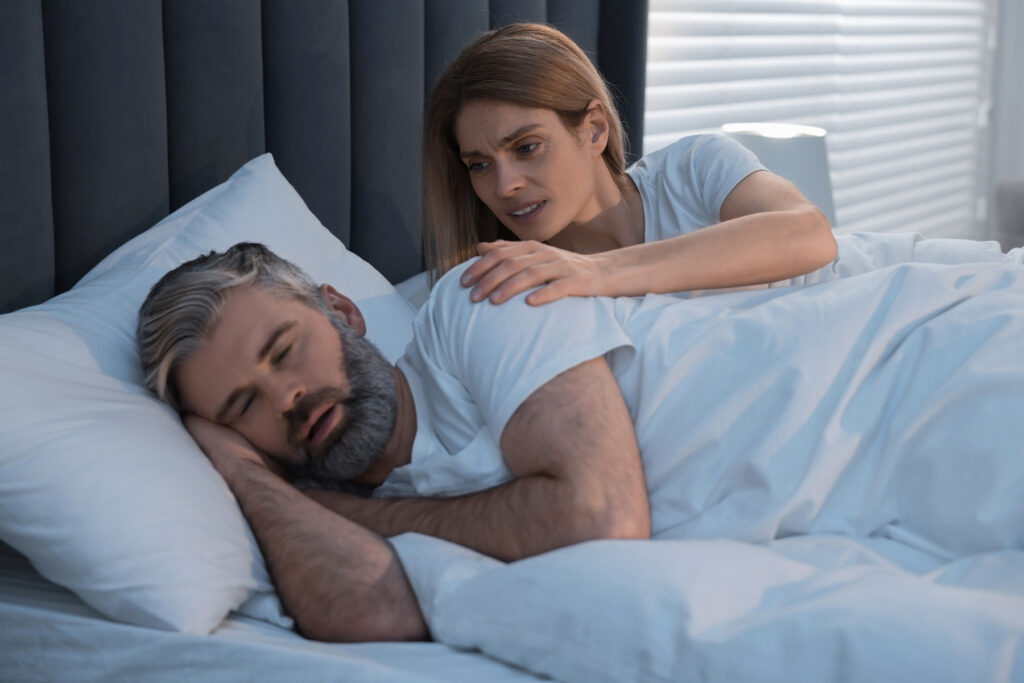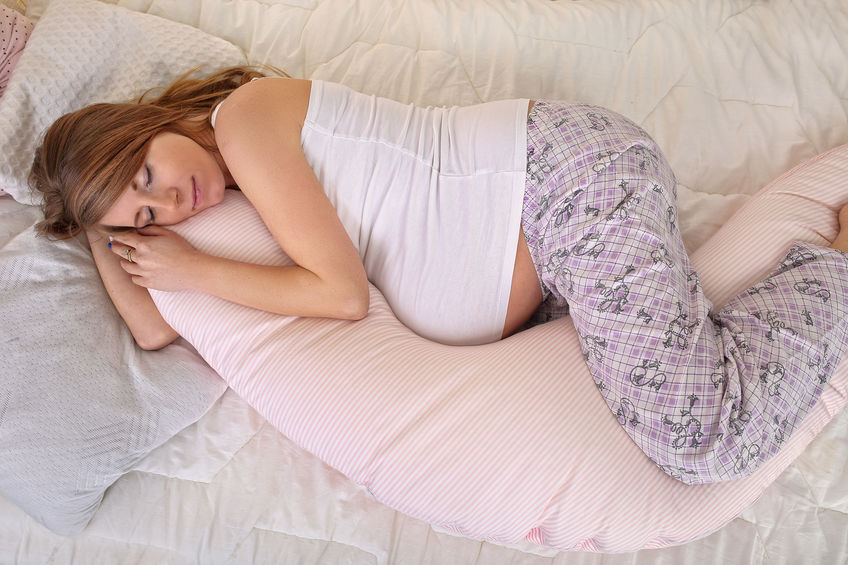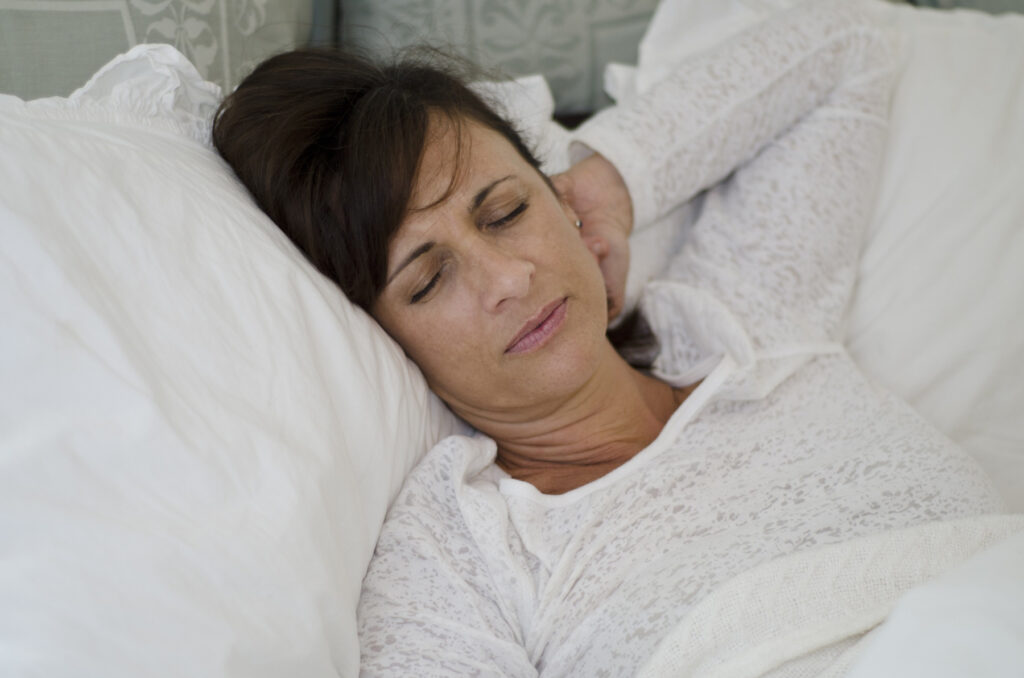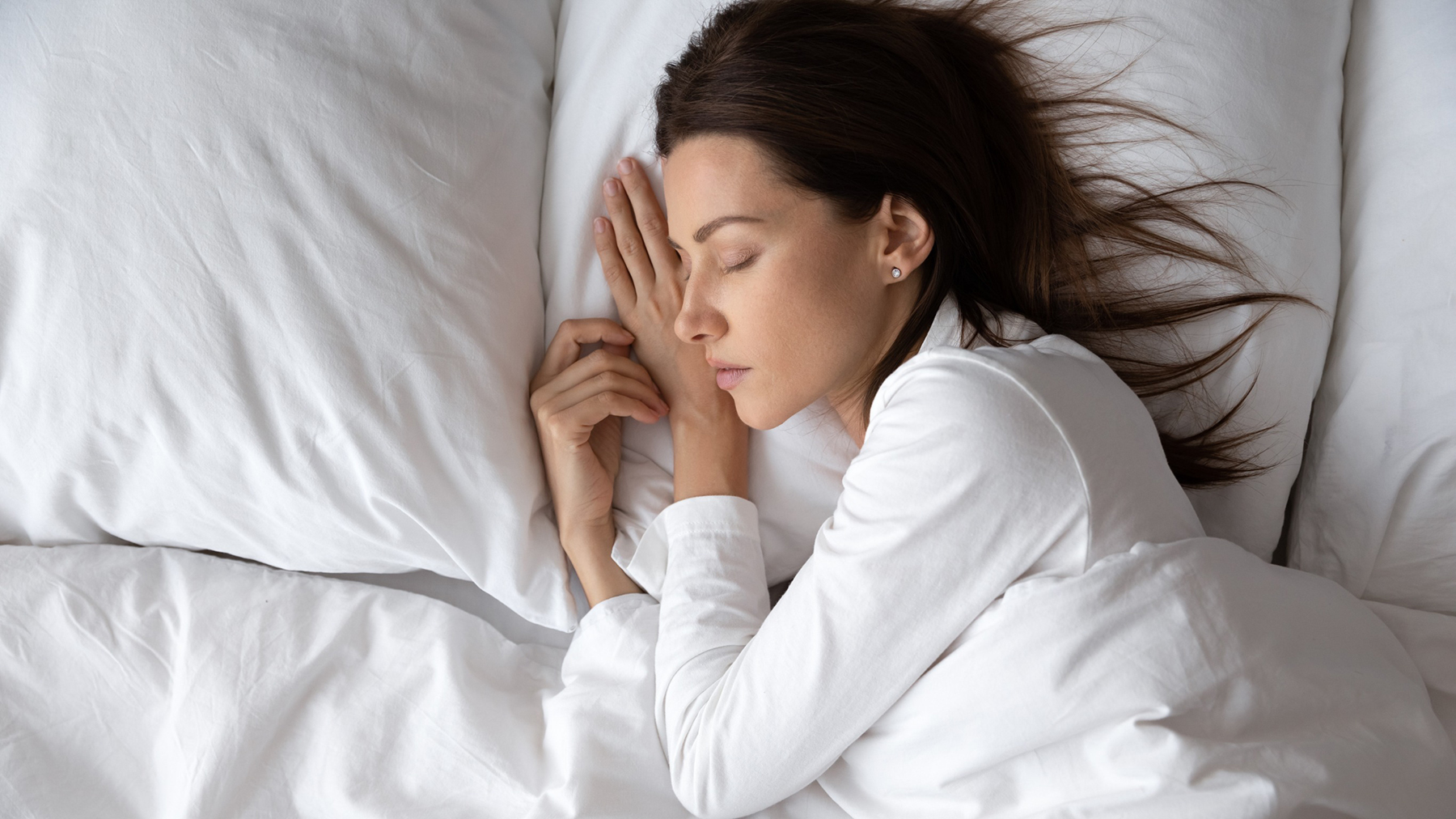Not many associate sleep quality with gender, but the different hormonal phases of a woman’s life, as well as the contrasting physical builds can contribute to overall sleep quality. Let’s discuss the phases, especially in a woman’s life and how they can improve the quality and quantity of sleep as they grow through these phases.
MEN AND WOMEN WITH OSA – HOW DOES IT DIFFER?
When it comes to OSA, the prevalence is more common in men than women at a ratio of 2:1, according to some studies. Yet as women age, the gap narrows, especially for women over 50 years or after menopause. No one knows for sure why men are more prone to OSA as women, but according to the NIH:
“There are a number of pathophysiological differences to suggest why men are more prone to the disease than women. Although the exact mechanisms are unknown, differences in obesity, upper airway anatomy, breathing control, hormones, and aging are all thought to play a role.”
– NIH

The symptoms of OSA are also manifested differently for men and women. Women who are diagnosed with OSA complain of daytime fatigue, initial insomnia, headaches, mood disorders, but less likely to report symptoms like snoring or apneas. (Apneas are temporary cessation of breathing, especially during sleep.)
Men, on the other hand, tend to have more loud or intense snoring, observed episodes of apneas during sleep, waking up gasping or choking for air, inability to focus and mood disorders. Oftentimes, is the men’s spouse or partner that initially reports and motivates the man to address these symptoms, which could lead to another reason more men are diagnosed than women.
When it comes to the accuracy of diagnosis, women again come out with the short side of the stick, in the sense their polysomnography results, as well as their symptoms vary from men and hence, while many women are often misdiagnosed. Symptoms of sleep apnea in women are often more challenging to diagnose because they are less likely to experience loud snoring and their breathing problems at night are more subtle. Women also tend to have shorter and less frequent apnea events.
The physiological makeup of men also plays a role. Even in men and women with the same BMI*, obstructive sleep apnea is usually more severe for men, which could be because of the difference of weight distribution. Also men tend to have more body weight, larger neck circumference and free fat mass than women, ironically with the same or similar BMI.
*What is BMI? Body mass index (BMI) is a medical screening tool that estimates body fat percentage by comparing a person’s weight to their height. The formula for calculating BMI is weight in kilograms (kg) divided by height in meters squared (m2), or BMI = kg/m2.
So while most sleep physicians are aware of these variances between gender, many internal or general medicine doctors may misdiagnose OSA in women due to the above factors, and may attribute their symptoms to other conditions such as anemia, depression or even menopause.
SLEEP QUALITY DURING PUBERTY
“Puberty is a massive software update that takes 6-8 years to complete.”

Many changes occur for the male and female body during puberty, but one less discussed change is related to how teens sleep. There is a natural shift that takes place, called the “sleep phase delay”, which means that the need for sleep is delayed by about two hours. For example, children’s circadian rhythms usually cause sleepiness to happen around 8:00 to 9:00pm, while during puberty, this may shift to around 10:00 to 11:00pm.
SYMPTOMS
Some teens and their parents may misinterpret this change as insomnia. The later sleep time does not mean less sleep, because teens need an average of nine hours of sleep per night. Early school times may inhibit this, so bedtimes may need to be adjusted and experimented with until you find an optimal time to go to bed and to wake up. With extra care and patience, teens will adjust fairly quickly to the new sleep schedule of their growing bodies.
TREATMENTS
Sleep hygiene is especially imperative during puberty so keeping a regular bedtime time and routine, avoiding caffeinated beverages before bed, turning off electronic devices at least one hour before bedtime, keeping active during the day and monitoring a healthy weight. All of these will contribute to your teens’ sleep quality.
PREGNANCY AND SLEEP
“Pregnancy is a process that invites you to surrender to the unseen force behind all life.”
“Pregnancy can affect sleep quality and duration due to hormonal, psychological, and physiological factors. Pregnant people may experience less sleep, more daytime sleepiness, and increased wakefulness than non-pregnant people, with 80% of women reporting poor sleep throughout pregnancy.”
– NIH

While this is a woman’s issue exclusively, the symptoms – of insomnia, tossing and turning from discomfort and body positioning, snoring and apnea events – all can hinder sleep of the pregnant woman’s partner or spouse. For many pregnant women, sleep is evasive with the physical discomfort, changing hormones, as well as the anxiety and excitement experienced prenatally. Some statistics show that at least 50% of pregnant women suffer from insomnia, at the very least. Why is there a decline of sleep quantity and quality during pregnancy? Here are some common reasons:
SYMPTOMS
- Pregnancy symptoms as well as changing hormone levels can cause generalized discomfort that make it difficult to fall asleep or stay asleep: Nausea, Vomiting, Breast tenderness, Increased heart rate, Shortness of breath, Higher body temperature, Frequent nighttime urination and Leg cramps.
- Obstructive Sleep Apnea & Pregnancy: Normal pregnancy weight gain and nasal congestion can lead to snoring, during pregnancy, which may be a risk factor for high blood pressure. And then some develop OSA, which could lead to deficient oxygen flow to the fetus and increase the risk of preeclampsia, gestational diabetes, and cesarean sections.
- Restless Leg Syndrome can make pregnant women have sensations of crawling, tickling or itching that drives an urge to move their legs. RLS is thought to affect 1/3 of women in their third trimester of pregnancy.
- GERD is also known as heartburn or acid reflux which causes pain or burning sensation in the esophagus, especially when lying down or during strenuous activity. This discomfort causes insomnia in all trimesters of pregnancy – 25% experience in the first trimester and up to 35% by the third trimester. Long-term GERD can damage the esophagus.
TREATMENTS
Improving sleep during pregnancy is a constant evolving treatment plan including:
- Continuous positive airway pressure (CPAP) therapy for OSA,
- Antacids for GERD, or vitamin and mineral supplements for RLS and other conditions.
- Vitamin supplementation, heat therapy and massage for leg cramps and RLS,
- Body position and pregnancy pillows can help the mother and fetus. For example, sleeping on the left side with the legs slightly curled is considered the best sleeping position in pregnancy. This position facilitates blood flow to the heart, kidneys, and uterus, and improves the delivery of oxygen and nutrients to the fetus.
- Good sleep hygiene again helps to facilitate better sleep with: dark, cool rooms, regular sleep times, turning off devices before bed, avoiding caffeinated beverages, reduce water intake just before bed to avoid nighttime bathroom breaks, and practicing relaxing activities before bed (journaling, stretching, massage, reading, mindfulness, soothing music, etc.)
SLEEP AND PERIMENOPAUSE AND MENOPAUSE
“Menopause is not the end; it’s a new beginning. Embrace the changes, and you’ll find the strength within.”

While menopause is a natural biological process that marks the end of a woman’s reproductive cycle, it can cause a host of issues during the transition. Sleep issues are common during the stages of perimenopause and menopause for women, amidst a plethora of other bothersome symptoms which also can interrupt sleep. According the National Sleep Foundation, over 60% of women in these phases of life experience insomnia caused by the hormonal changes in the body and central nervous system, including declining estrogen.
“The decline in estrogen and progesterone levels lead to vasomotor symptoms (hot flashes) which can contribute to sleep disturbances, insomnia, increased sleep latency, and decreased sleep efficiency. Women may find an uptick in RLS symptoms, particularly if their transition leaves them with heavier periods and resultant loss of iron. The protective effect of these hormones on the upper airway muscle tone diminishes, leading to an increased likelihood of airway obstruction during sleep (OSA).”
– Sleepedu.org
SYMPTOMS
The hormonal shifts in a woman’s body causes symptoms that can contribute to poor sleep including:
- Hot flashes and night sweats
- Mood changes, such as depression
- Anxiety
- Restless leg syndrome
- Increased frequency of urination.
TREATMENTS
All hope is not lost, nor are the symptoms usually permanent, but here are some treatments to help women stay well rested during this transitional time. Like in other changes in a woman’s life, there are ways to manage your symptoms in a proactive and healthy way.
“The estrogen in HRT has been proved to decrease sleep latency, the number of awakening after sleep occurs, and cyclic spontaneous arousals; and increase total sleep time. Second, estrogen has a regulating effect on body temperature.”
– NIH
- Hormone Replacement Therapy can supplement your levels of estrogen and progesterone during menopause’s decline. HRT can help reduce vasomotor (hot flash) symptoms, reduce nocturia which is the need to urinate during the night, helps people fall asleep faster, and reduce nighttime restlessness and waking up. Why?
- Cognitive behavioral therapy (CBT) can help you identify negative thought patterns or behaviors affecting your sleep and work through any mood issues with effective coping strategies.
- Herbal and dietary supplements such as melatonin, valerian root, CBD, Ashwagandha can act as natural sleep aids, but it’s recommended to speak to your physician before taking any vitamins or herbal supplements.
- Body temperature management can include a cool bath or shower before bed; wearing loose or light cotton pajamas; keeping your bedroom temperature cooler; place a fan near your bedside; avoid heavy blankets; consider a cooling mattress or mattress pad; avoid triggers like alcohol, caffeine and spicy foods that increase perspiration; and stay hydrated to regulate body temperature.
- Improved Sleep Hygiene which is effective for all stages of life. But for peri or menopausal women, the Mayo Clinic suggests: avoiding heavy meals for bed, reduce exposure to light before bed, avoid napping after 3 p.m., exercise in the morning or afternoon, create relaxing bedtime ritual, avoid all electronics in the bed, and stick to a consistent sleep schedule.
In conclusion, good sleep is essential to good female health, regardless of age or phase of life. Impaired or poor sleep can increase the risk of health problems such as diabetes and heart disease, and it can worsen some physical and mental health conditions, such as high blood pressure, anxiety, and depression. Whatever stage of life you are at, take time to evaluate your sleep quality and related symptoms and don’t hesitate to talk to your primary care physician or a sleep specialist if you suspect OSA.
Get started on a better night’s sleep with Everything CPAP:








